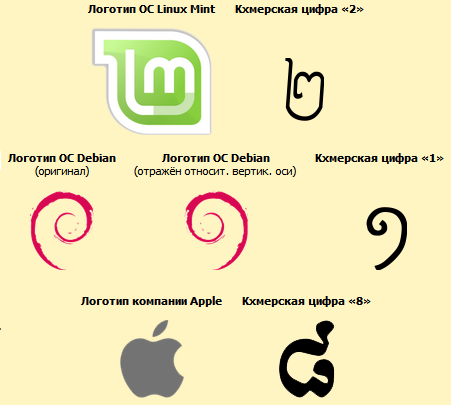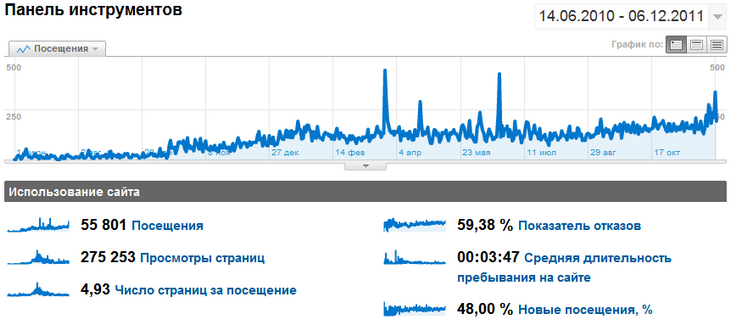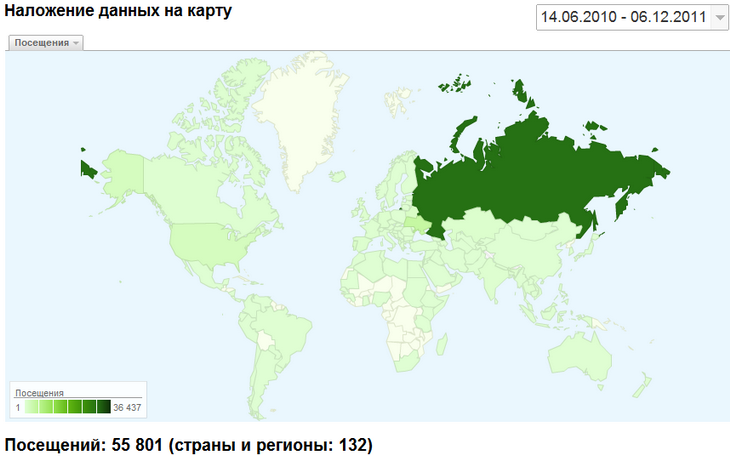Web application - a visual date converter for a large number of time systems
Background
For some of us, hobbies from childhood pass into adulthood, and this is just my case. Now I’m 25, and for the last 17 years I have been consciously collecting, studying and analyzing coins from around the world. It’s good to have internet; and in the 90s and early 2000s, information had to be scooped mainly from books.
One of the biggest problems associated with my hobby at that time was determining the year of coin minting, because in the Arab countries it has its own calendar, Israel has its own, the Thais have their own, not to mention Japan, China and so on. The difficulty was caused not so much by the conversion process itself as by recognition of symbols on a coin. As a result, it remained in the notebook with the inventory of the collection: “-? - year.”
In 2006, a book by Alexander Alexandrovich Shchelokov was publishedcalled "Fascinating Numismatics." Considering myself very well versed in the technical part and paying attention to the belonging of this book to the category of popular publications, I put it away. At the end of spring 2009 there was a slight repair, and the book caught my eye again - this time I started reading it.
Towards the end, a description of the chronological systems of some countries was discovered, that is, just the treasure of knowledge that I was looking for.
Having talked about some systems, A. A. Shchelokov writes: “It is possible to continue the list further, but everyone who will need to clarify a specific date will be able to do this. <...> we were convinced that the issue of dating is one of the most difficult in numismatics. Many counting systems and calendars in the world. It is impossible to list all of them. Yes and no, the author has no goal of turning a popular book into a comprehensive reference book or practical guide. It is much more important, in our opinion, to arouse curiosity, to draw the attention of readers to numismatics and bonistics. "
Creature
Inspired by such words and surprised at the lack of web applications with the corresponding functionality, I decided to create my own, for which I brought my friend to the business. It can be said that much was done for oneself. The name “ Time Machine ” came to mind by itself, and after a year of wandering around test domains, the web application finally found a permanent address on my website, as well as its full name: Creounity Time Machine: dating, history, writing .
What can it do?
- At the time of writing this post, 24 chronological systems are presented there, most of which are implemented as interactive converters. In each of these converters, two directions for converting dates are available: from the selected system per year according to the Gregorian calendar; and vice versa, to find out how a particular Gregorian year looks in the symbols of the corresponding system of chronology.
- Each system is accompanied by an information block with its description, which tells about the origin of this system, provides the necessary formulas and conversion algorithms, provides historical information and other “goodies” that I collected from a huge number of sources, including by communicating with experts on foreign forums.
- The “Coin Illustrations” tab contains a scroller with color illustrations of coins 400x400 px, also with a brief description below them; You can control the scroller by clicking on the picture, clicking on the “Forward” / “Back” links, as well as from the keyboard.
Advantages of the “Time Machine” compared to other existing date conversion tools
- the largest selection of chronological systems ( 24 );
- the presence of reverse conversion;
- convenience, visualization and understandability (we made it so that even a layman in the field of numismatics and / or computer interfaces, by opening our web application, already knew how to use it. You only need to enter exactly the date characters that you see on the coin and press "Calculate");
- the presence of different options for writing date characters for almost every system (including the methods of writing numbers that were used up to 800 years ago);
- the availability of detailed descriptive parts;
- and yes, everything is duplicated in English: both the interface and descriptive texts (it took several months to prepare and proofread the translations);
- the application is updated almost every day: new information is added, the noticed clerical errors, factual errors and other shortcomings are corrected;
How does it work?
Pretty ingenuous. All the math code calculating the converters is JS inclusion in php files. It is worth noting that 98% of the code was written specifically for this project. All features, including the engine for scrollers (not to mention the engine of the web application itself), were implemented manually (jQuery is used in a single place where you had to insert a tooltip with a shadow and a pointing triangle).
Curious moments that were discovered
The numbers in the various scripts look amazing. Some numbers, say, among Thais or Cambodians resemble the logos of some operating systems and brands. You don’t have to go far for examples. See for yourself (in the topic about Linux Mint, I once left a link):

It is clear that all these coincidences are pure coincidence, but anyway ...
A bit of analytics
According to the structure of the numerical system, the systems presented in the project can be divided into 3 categories:
- To record the digits of tens, units (optionally hundreds), individual characters are used; the number is formed in a multiplicatively additive way - Ethiopia , Israel , Russia (borrowing from Ancient Greece!), Georgia (used in the 19th century), in a sense - Japan and Taiwan ;
- Decimal system; everything is “like ours”, only its numbers - the majority of the remaining systems (Bangladesh, Cambodia, Myanmar, Nepal, Thailand and others);
- Roman numerals stand separately .
Examples of writing numbers (not necessarily years!) . Attention: if you do not have some fonts installed, or if you are reading it from a mobile device, then instead of a series of characters you may see squares or nothing at all:
- Japan. 569 = 五百 六 十九 (5 * 100 + 6 * 10 + 9);
- Ethiopia. 2513 = ፳፭፻፲፫ ((20 + 5) * 100 + 10 + 3);
- Georgia. 1834 =



 (1000 + 800 + 30 + 4);
(1000 + 800 + 30 + 4); - Israel. 5751 = ה'תשנ"א (if you look from left to right: 1 + 50 + 300 + 400 + 1000 * 5) [in Hebrew, as in Arabic, reading and writing is carried out from right to left];
- Russia. 1714 = ҂АѰДI (1000 * 1 + 700 + 4 + 10);
- Tibet. 1984 = ༡༩༨༤ (1984, it is);
The Chinese have a special perception of large numbers, and they are recorded somewhat unusual. Take a look at this:

Here is a banknote of $ 50,000,000 worth of the so-called Hell Bank Note. The Chinese are burning such special banknotes in order to “transfer” the amount indicated on the bill to their deceased relatives. 50 million are written like this (from right to left): “萬 仟 伍”, that is, we have the following: 5 * 1'000 * 10'000 (five thousand ten thousandths). The Chinese have 2 ways of writing numbers: simplified and traditional (the latter is distinguished by more sophisticated hieroglyphs). The banknote uses the traditional form of notation.
According to the principle of counting years (in other words, choosing a zero-point era), calendars / era can be divided into the following subcategories:
- The countdown is from the date associated with an important religious event (the usual Gregorian calendar, the lunar hijra (used in Arab countries), the Buddhist era (modern Thailand, Cambodia). Important religious events are, respectively, the Nativity of Christ, the relocation of the Prophet Muhammad and the first followers of Islam from Mecca to Medina, and finally, the death (departure to nirvana?) Of the Buddha.
- The countdown is from a certain important event in the past of the nation (gaining independence, victory over Arag, foundation of the capital, etc.) - era of Saka (Nepal), era of Bikram Samvat (Nepal), era of Nepal Samvat (Nepal), era of Chula-Sakarat (Myanmar), Mingo era (Taiwan), Juche era (DPRK), etc.
- The countdown is from the date of the accession to the throne of the new emperor; the emperor dies - a new era is approaching ( Japan , Korea (empire), Tibet (during the reign of the Chinese emperors in the late 18th-mid-19th centuries)).
- Cyclic calendar ( China , Tibet ). The cycle lasts 60 years, then everything repeats again.
It is worth noting that in Russia before Peter (when the years were reckoned “from the creation of the world”), as well as now in Israel, it is common practice to omit the discharge of thousands in the record and pronunciation of the year.
One more thing ...
There are actually several such things in Time Machine, here are the most important:
- notes addressed to numismatists (7 pcs., they are available in the menu, under all time systems);
- a collection of handwritten samples of the written language of the peoples of the countries of the world , and a number of exhibits are accompanied by audio versions of the written sentences, even in Cuba with a song and a photo (if you have friends from those countries from which I still do not have samples - send me, I will be glad to post! (not friends, but handwritten samples)) ;
- subsection "Teleport" , devoted to the foreign travels of me and my friends (there are few stories so far, but we are working on it!). All stories are accompanied by colorful pictures. Do you want to send a story about your journey to a distant country? Send, I will also be very glad to publish it.
And ... where would we be without an accordion some statistics?
The earliest delivered counter is Google Analytics. Data is measured on June 16, 2010. During this time (as of the day this article was published), visitors from 131 countries used the Time Machine , which I consider to be a very good indicator. In many ways, this became possible due to the fact that I made a translation and posted an English version of the project.
By the way, in just a year with a little of its existence, “ Creounity Time Machine»Became the standard among tools for determining coin dates, in many cases replacing the thick Krause directories, on the initial pages of which some systems are listed. And this is not only in Russia, but also in the USA and in European countries. This is a direct manifestation of my philosophy, namely: " Even with a narrow target audience, we must strive to be as large as possible ."
The average attendance over the past few months ranges from 150 to 190 visits per day with 500-700 pages viewed . A bit of visualization:

Peaks correspond to those days when it was very possible to talk about the project somewhere in the subject.
Coverage by country:

(132 = 131 + “not set”) The
top ten most visited countries: Russia, Ukraine, USA, Belarus, Portugal, Kazakhstan, Spain, Germany, Great Britain, India.
The ten most visited cities in Russia : Samara, Moscow, St. Petersburg, Kazan, Novosibirsk, Yekaterinburg, Krasnodar, Krasnoyarsk, Belgorod, Tyumen.
Not a penny was spent on advertising and promoting the project. All I did was talk about the “Time Machine” at the thematic forums of numismatists and treasure hunters, and then popular rumor did its good work.
There is also no advertising in the project itself and never has been, but ... →
To infinity ... and beyond!
→ ... but I believe that it is necessary to write applications for iOS and Android, as well as for Mac OS X, while setting reasonable, but not the lowest prices on them (I asked thematic users - they say they would love to buy and use, especially this concerns the desktop version for Mac; iPhone and iPad are a trend, and I think you don’t need to go past it either). In this regard, I invite developers to cooperate. I will provide the necessary raw materials.
If something doesn't work in your browser, please let me know in the comments. All bugs will be in the todo-list for correction and will be fixed.
